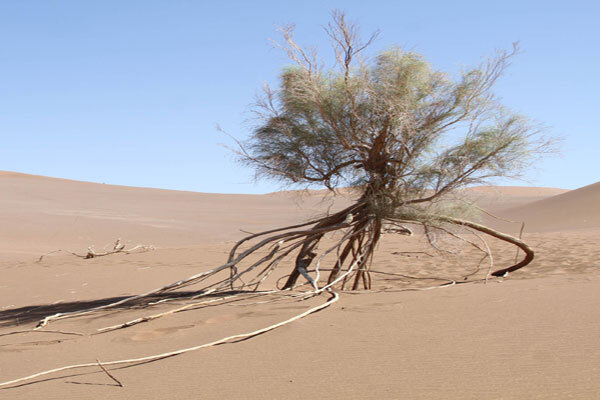Desertification intensifies: will management policies be revised?

TEHRAN – While Iran is facing an intensified trend of desertification, desert greening operations should be carried out across more than one million hectares of land according to the Sixth National Development Plan (2016-2021), but the progress has been much less than projected.
In the meantime, experts have proposed solutions such as refraining from improper dam construction and reforming water and soil management policies.
Parviz Garshasbi, deputy head of the Forests, Rangelands, and Watershed Management Organization (FRWMO), said that according to the Sixth National Development Plan, desert greening measures were to be carried out in 1,140,000 hectares of the country's deserts, but so far, the operations have been conducted in only 350,000 hectares of deserts.
An estimated 2 billion tons of soil is lost due to erosion in Iran annually, it takes an average of 400 years to form a centimeter of soil on the planet, he said, adding, in Iran's climate, this time is between 700 and 1000 years.
Wind erosion brings an annual economic and environmental damage of 30 trillion rials (nearly $714 million at the official rate of 42,000 rials) to the country, according to the latest studies in 2019.
“Over 88 percent of the country can be affected by desertification. According to the 2018 survey, 37 million hectares of the country are exposed to land degradation and 23 percent of the total area is subject to severe degradation in terms of reduction of vegetation and soil fertility.
Also, 22 provinces of the country with an area of 29.5 million hectares in 187 regions are affected by wind erosion and there are 237 crisis centers with an area of 13.9 million hectares and due to the influx of annual quicksand to the railway infrastructure, roads, agriculture, and other parts are damaged,” he explained.
Excessive dam construction
Garshasbi said that the crisis is caused by the imbalance of available water and consumption and the lack of a comprehensive program in the field of sustainable management of water and soil resources and the lack of approaches based on promoting resilience and adaptation to water scarcity.
If there is no change in current policies and we continue the expansion of dams, increasing the area under cultivation and lack of water management in the country, in the near future we will not only move towards desertification but also large and productive plains of the country will be out of cycle, he highlighted.
“Rapid slope and human factors, especially over-exploitation of land in pastures, forests, agricultural lands, and deserts are other causes of high soil erosion in Iran.
Unfortunately, over the past decade, about one million hectares of sand and dust hotspots have been added to the country's desert due to the wrong policies in the field of water and agricultural resource management and in total due to climate change and human intervention,” he explained.
Masoud Mansour, head of the FRWMO, referring to the development of a policy for the conservation and management of rehabilitated areas, said that policies were approved and communicated to all provinces. Since then, management based on the participation of locals through desert ecotourism, camel breeding, wind, and solar power plants is on agenda.
According to him, currently, the methods of rehabilitating desert areas are based on the pattern of prevention of factors of destruction and implementation of projects such as grazing control, development of compatible native species, and use of wastewater management.
Measures against wind erosion depend on a series of external factors so that vegetation and sensitive ecosystems in desert areas will be the first victims of inefficiency and improper performance of water and soil resources management.
FB/MG

Leave a Comment